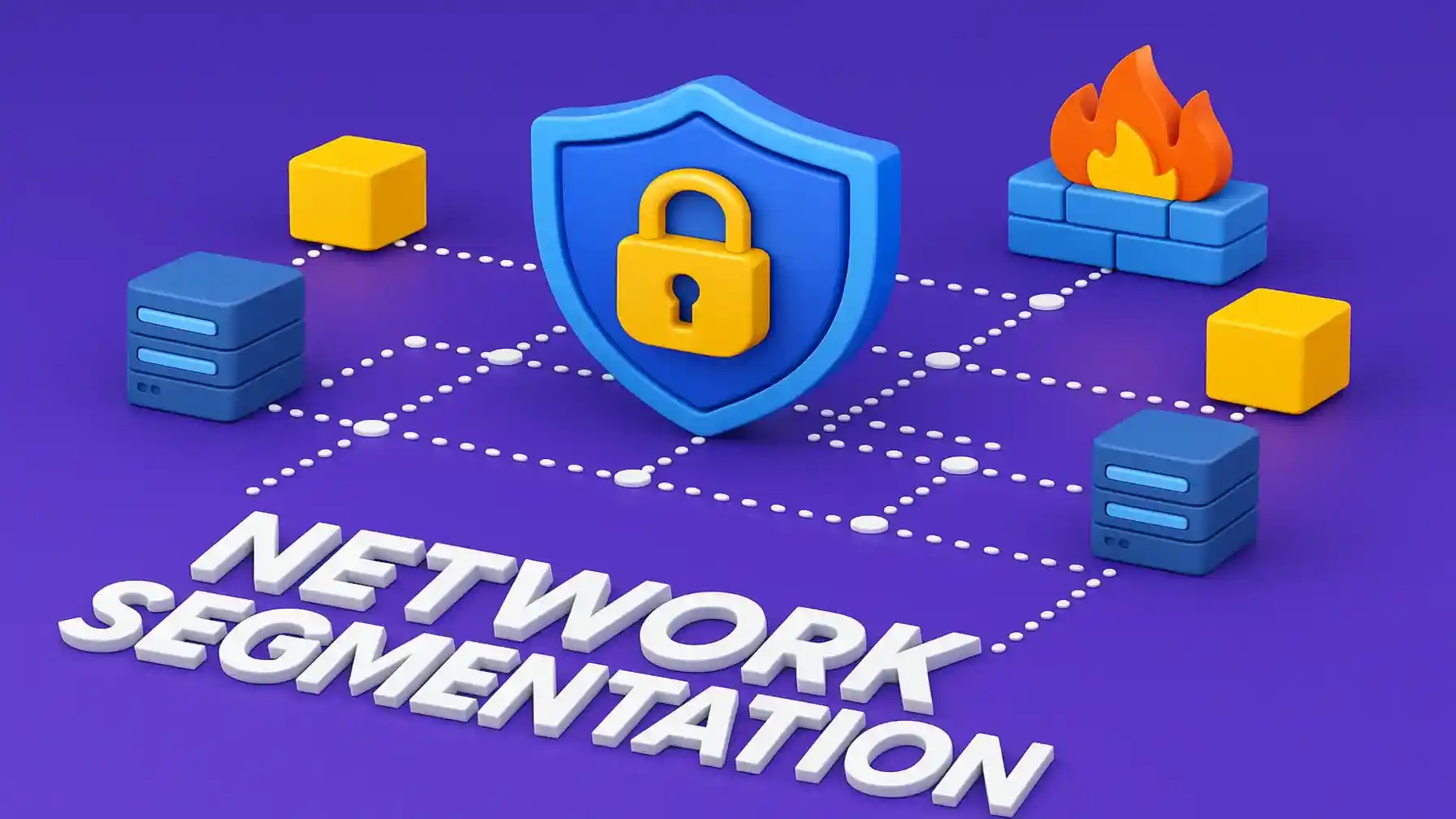In today’s interconnected world, cybersecurity frameworks play a crucial role in protecting businesses, government agencies, and individuals from cyber threats. With cyberattacks becoming more sophisticated, organizations must implement structured security frameworks to minimize risks, safeguard sensitive data, and ensure regulatory compliance. Without a well-defined framework, businesses face severe consequences, including financial loss, reputational damage, and legal penalties.
This article explores why cybersecurity frameworks are essential, their key components, and the most widely adopted frameworks businesses can leverage to enhance their security posture.
Why are Cybersecurity Frameworks essential for Modern Businesses?
As technology advances, businesses increasingly rely on digital systems for operations, data storage, and communication. However, this digital reliance also exposes them to a range of cyber threats, including malware, ransomware, phishing, and insider attacks. Cybersecurity frameworks provide structured guidelines to help organizations prevent, detect, and respond to cyber threats effectively.
Also Read: Effective Network Intrusion Detection for Cybersecurity Defense
Key Benefits of Cybersecurity Frameworks
- Systematic Risk Identification – A structured framework enables businesses to assess risks, detect vulnerabilities, and implement necessary security controls.
- Regulatory Compliance – Many industries, such as healthcare and finance, must adhere to strict security standards like HIPAA and PCI DSS. Cybersecurity frameworks help businesses meet these requirements.
- Security Awareness Culture – Implementing a cybersecurity framework fosters a culture of security awareness, ensuring employees understand their role in preventing cyber threats.
- Incident Response Preparedness – Well-defined frameworks ensure organizations can respond swiftly to security breaches, minimizing potential damage.
- Continuous Improvement – Cyber threats evolve constantly, and a framework helps businesses adapt by incorporating the latest security measures.
Without a structured cybersecurity framework, organizations may struggle to defend against cyberattacks, potentially leading to devastating consequences.
Core Components of a Robust Cybersecurity Framework:
A comprehensive cybersecurity framework consists of multiple components that work together to strengthen an organization’s security posture. Each component plays a critical role in reducing cyber risks and ensuring the integrity of sensitive data.
1. Risk Assessment and Management
Risk assessment is the foundation of any cybersecurity strategy. It helps businesses identify potential threats and vulnerabilities that could compromise security. Organizations must:
- Conduct a thorough inventory of assets, including hardware, software, and data.
- Identify possible threats, such as malware, phishing, and insider attacks.
- Assess the likelihood and impact of each threat.
- Prioritize risks and implement appropriate mitigation strategies.
Regular risk assessments help businesses stay proactive in managing cybersecurity threats.
2. Security Policies and Procedures
Clear and well-defined security policies ensure that employees and stakeholders understand how to handle sensitive data and respond to security incidents. These policies should cover:
- Access control – Define who can access specific data and systems.
- Data protection – Outline how to handle, store, and transfer sensitive data.
- Incident response – Establish protocols for detecting, reporting, and mitigating security breaches.
- Acceptable use policies – Set guidelines for using company resources and networks.
Policies should be updated regularly to align with emerging security threats and best practices.
3. Incident Response Planning
Cyber incidents can occur at any time, and businesses must be prepared to respond effectively. An incident response plan (IRP) includes:
- Preparation – Train employees on security awareness and best practices.
- Detection – Use monitoring tools to identify potential threats.
- Containment – Isolate compromised systems to prevent further damage.
- Eradication – Remove the threat and patch vulnerabilities.
- Recovery – Restore affected systems and conduct a post-incident analysis.
By following a structured IRP, organizations can minimize the impact of cyberattacks.
4. Continuous Monitoring and Threat Intelligence
Cybersecurity is an ongoing process. Continuous monitoring involves:
- Implementing security information and event management (SIEM) tools.
- Conducting regular security audits to identify weaknesses.
- Utilizing threat intelligence platforms to stay informed about emerging threats.
- Performing penetration testing to assess system vulnerabilities.
A proactive approach to cybersecurity allows organizations to detect and respond to threats before they cause significant damage.
Comparing Different Cybersecurity Frameworks:
Several cybersecurity frameworks exist, each designed to address specific security needs. Organizations must select a framework that aligns with their industry requirements and risk profiles.
1. NIST Cybersecurity Framework
The National Institute of Standards and Technology (NIST) Cybersecurity Framework is one of the most widely adopted frameworks. It is designed to help businesses manage and reduce cybersecurity risks effectively.
Five Core Functions of NIST Framework
- Identify – Understand the business environment, assets, and risks.
- Protect – Implement safeguards to ensure critical systems remain secure.
- Detect – Establish mechanisms to identify cyber threats in real time.
- Respond – Take immediate action against detected security incidents.
- Recover – Restore normal business operations after a cyber incident.
Many organizations choose NIST due to its flexibility and scalability, making it applicable to businesses of all sizes.
2. ISO 27001: Information Security Management System (ISMS)
ISO 27001 is an internationally recognized standard that provides a systematic approach to managing information security risks. It requires organizations to:
- Establish an Information Security Management System (ISMS).
- Implement security policies and risk management strategies.
- Conduct regular audits to ensure compliance.
- Continuously improve security measures based on threat assessments.
ISO 27001 is ideal for organizations that require a structured and internationally recognized security framework.
3. CIS Controls: Prioritized Security Measures
The Center for Internet Security (CIS) Controls provides a prioritized set of security actions that help organizations mitigate cyber threats effectively. The CIS framework consists of:
- Basic Controls – Fundamental security practices, such as inventory management and vulnerability scanning.
- Foundational Controls – Measures that strengthen system security, including access control and malware defenses.
- Organizational Controls – Advanced security protocols, including penetration testing and security awareness training.
CIS Controls are widely used by small and medium-sized businesses looking for a cost-effective cybersecurity solution.
Tailoring Cybersecurity Frameworks for Specific Industries:
Different industries have unique cybersecurity challenges and must adopt frameworks that address their specific needs.
1. Healthcare Industry (HIPAA Compliance)
The Health Insurance Portability and Accountability Act (HIPAA) mandates strict security requirements to protect patient information. Healthcare organizations must:
- Implement data encryption to safeguard patient records.
- Enforce strict access control to prevent unauthorized access.
- Conduct regular risk assessments to ensure compliance.
2. Financial Sector (PCI DSS Compliance)
The Payment Card Industry Data Security Standard (PCI DSS) ensures the secure handling of payment card information. Financial institutions must:
- Use multi-factor authentication (MFA) for secure transactions.
- Regularly update security policies to address fraud prevention.
- Implement network segmentation to prevent unauthorized access to payment systems.
3. Government Organizations (FISMA Compliance)
The Federal Information Security Management Act (FISMA) sets security standards for government agencies. Compliance requirements include:
- Developing risk-based security policies.
- Implementing continuous monitoring programs.
- Ensuring all government systems undergo security assessments.
Industry-specific frameworks ensure organizations meet regulatory requirements while enhancing their security resilience.
The Role of Continuous Monitoring in Cybersecurity Frameworks:
In today’s fast-paced digital environment, continuous monitoring is essential for detecting and mitigating cyber threats in real-time. Cybercriminals are constantly evolving their tactics, making it crucial for businesses to stay ahead by maintaining a proactive approach to cybersecurity.
Why continuous monitoring matters?
Unlike traditional security approaches that rely on periodic assessments, continuous monitoring enables organizations to:
- Identify Threats in Real Time – Advanced monitoring tools detect anomalies, unauthorized access, and suspicious activity instantly.
- Reduce Response Time – The faster a threat is detected, the quicker organizations can contain and neutralize it.
- Enhance Compliance – Many regulations, including GDPR and FISMA, require continuous monitoring as part of cybersecurity compliance.
- Improve Incident Analysis – Monitoring tools provide detailed logs that help security teams analyze and understand the nature of cyber threats.
Best Practices for Continuous Monitoring
To establish a strong continuous monitoring strategy, businesses should:
- Implement SIEM Tools – Security Information and Event Management (SIEM) software aggregates data from multiple sources to detect security threats.
- Automate Log Analysis – Using artificial intelligence (AI) and machine learning (ML) to analyze security logs minimizes the risk of human oversight.
- Conduct Regular Penetration Testing – Ethical hacking simulations help businesses identify vulnerabilities before attackers exploit them.
- Use Endpoint Detection and Response (EDR) Solutions – EDR systems continuously monitor endpoints like laptops and mobile devices for suspicious behavior.
By integrating continuous monitoring into their cybersecurity frameworks, businesses can significantly strengthen their defenses against evolving cyber threats.
How to conduct a comprehensive risk assessment?
A risk assessment is a fundamental part of any cybersecurity framework. It helps businesses understand potential vulnerabilities and develop strategies to mitigate them effectively.

Steps to Conduct a Risk Assessment
- Identify Critical Assets – Determine which systems, applications, and data are most valuable to the organization.
- Analyze Potential Threats – Assess risks such as malware infections, insider threats, DDoS attacks, and data breaches.
- Evaluate Risk Impact – Determine the potential financial, operational, and reputational consequences of each threat.
- Prioritize Risks – Rank threats based on severity and likelihood, focusing on those with the highest potential impact.
- Implement Risk Mitigation Measures – Apply security controls, firewalls, encryption, and other defenses to reduce risk exposure.
Risk assessments should be performed regularly, ensuring that security strategies remain effective against emerging cyber threats.
Developing Security Policies Aligned with Cybersecurity Frameworks:
Security policies serve as the foundation for an organization’s cybersecurity strategy. They define how employees, vendors, and stakeholders should handle data and respond to security threats.
Key Security Policies Every Organization Needs
- Access Control Policy – Determines who can access sensitive data and systems.
- Acceptable Use Policy – Outlines acceptable and prohibited activities on company networks.
- Incident Response Policy – Provides guidelines for handling security incidents.
- Data Protection Policy – Establishes measures for encrypting, storing, and transferring data securely.
- Remote Work Security Policy – Defines security protocols for employees working from home.
To ensure effectiveness, security policies must be:
- Reviewed and updated regularly to reflect new threats.
- Clearly communicated to all employees and stakeholders.
- Enforced consistently across all departments.
Organizations that align their security policies with established cybersecurity frameworks can create a structured approach to data protection.
Incident Response Planning: Preparing for Cyber Threats
No cybersecurity framework is complete without a robust incident response plan (IRP). Cyberattacks can happen at any time, and businesses must be prepared to respond efficiently.
Essential Phases of an Incident Response Plan
- Preparation – Conduct cybersecurity training, establish communication protocols, and define response roles.
- Detection and Identification – Use intrusion detection systems (IDS) to identify suspicious activities.
- Containment – Isolate infected systems to prevent further damage.
- Eradication – Remove malware, patch vulnerabilities, and apply security updates.
- Recovery – Restore systems, verify security improvements, and document lessons learned.
Regular testing of the IRP through cyberattack simulations ensures that businesses are well-prepared to handle real threats.
Enhancing Cybersecurity Frameworks with Employee Training:
One of the most overlooked aspects of cybersecurity is employee training. Human error remains one of the leading causes of data breaches, making security awareness a top priority.
How Employee Training Strengthens Cybersecurity?
- Reduces Phishing Attacks – Employees learn to identify and report phishing emails.
- Encourages Secure Password Practices – Training ensures staff members use strong, unique passwords for different accounts.
- Improves Incident Reporting – Employees understand the importance of reporting suspicious activities immediately.
Implementing Effective Security Awareness Programs
- Conduct regular training sessions to keep employees informed about new cyber threats.
- Utilize simulated phishing attacks to test employee awareness.
- Encourage a security-first culture, where employees feel responsible for protecting company data.
When organizations integrate security training into their cybersecurity frameworks, they reduce human-related vulnerabilities.
Integrating Emerging Technologies into Cybersecurity Frameworks
As technology evolves, businesses must integrate emerging security solutions into their cybersecurity strategies.
Key Technologies Enhancing Cybersecurity
1. Artificial Intelligence (AI) and Machine Learning (ML)
-
- AI-driven tools can detect anomalies and predict cyber threats before they escalate.
2. Cloud Security Solutions
-
- Implementing Zero Trust Architecture (ZTA) ensures strict identity verification.
3. IoT Security Measures
-
- Encrypting Internet of Things (IoT) devices prevents unauthorized access.
Organizations that adopt these technologies into their cybersecurity frameworks gain a competitive advantage in threat mitigation.
Measuring the Effectiveness of Cybersecurity Frameworks:
Implementing a cybersecurity framework is only the first step. Organizations must track key performance indicators (KPIs) to measure effectiveness.
Critical Cybersecurity Metrics to Monitor
- Mean Time to Detect (MTTD) – How quickly security teams identify threats.
- Mean Time to Respond (MTTR) – The time taken to mitigate a cyberattack.
- Number of Security Incidents – Tracks the frequency of cyber threats.
Regular audits and assessments help organizations refine their cybersecurity frameworks for maximum efficiency.
The importance of Regular Audits and Assessments:
Regular cybersecurity audits help businesses identify weaknesses and ensure compliance with security standards.
Types of Cybersecurity Audits
- Internal Audits – Conducted by in-house security teams to assess vulnerabilities.
- External Audits – Performed by third-party cybersecurity firms to provide independent assessments.
- Compliance Audits – Ensures adherence to industry regulations like ISO 27001 and NIST.
Continuous auditing allows businesses to adapt to new security challenges and maintain a strong defense.
Leveraging Automation for Cybersecurity Efficiency:
Automation enhances cybersecurity frameworks by streamlining security processes.
Benefits of Cybersecurity Automation
- Faster Threat Detection – AI-powered tools detect security breaches instantly.
- Reduced Human Error – Automating security responses minimizes risks.
- Improved Compliance – Automated security audits ensure adherence to industry standards.
Businesses leveraging automation in their cybersecurity frameworks can achieve greater efficiency and protection.
Conclusion: Strengthening Cybersecurity for a Resilient Future
Cybersecurity frameworks are essential for protecting businesses against modern cyber threats. By adopting structured frameworks, organizations can:
- Identify and mitigate risks effectively.
- Enhance regulatory compliance.
- Improve incident response capabilities.
- Foster a culture of cybersecurity awareness.
Continuous monitoring, employee training, and the integration of emerging technologies ensure that organizations remain resilient against evolving cyber threats.
FAQs:
1. What is the best cybersecurity framework for small businesses?
The CIS Controls framework is highly recommended due to its practical, cost-effective security measures.
2. How can organizations ensure compliance with cybersecurity regulations?
Businesses should regularly conduct audits, update security policies, and implement automated compliance tools.
3. Why is continuous monitoring necessary?
It helps detect security threats in real time and enables quick responses to cyberattacks.
Also Read: Overcoming Challenges in Cloud Security Implementation
4. What role does AI play in cybersecurity?
AI enhances threat detection, automates security responses, and predicts cyberattacks before they occur.
5. How often should businesses update their cybersecurity framework?
Cybersecurity frameworks should be reviewed and updated at least annually to stay ahead of emerging threats.








